See how to make a pinwheel block that lays flat. Plus, grab the free Pinwheel Block Cutting Chart to make the process even easier. ↓
The pinwheel quilt block is fun, simple, and full of movement - it’s a great way to add energy to any quilt! Be it in bright colors or soft pastels, it always stands out, and I love that.
Grab the handy math cheat sheet to help you create pinwheels in any size you need - no guessing or tricky calculations!
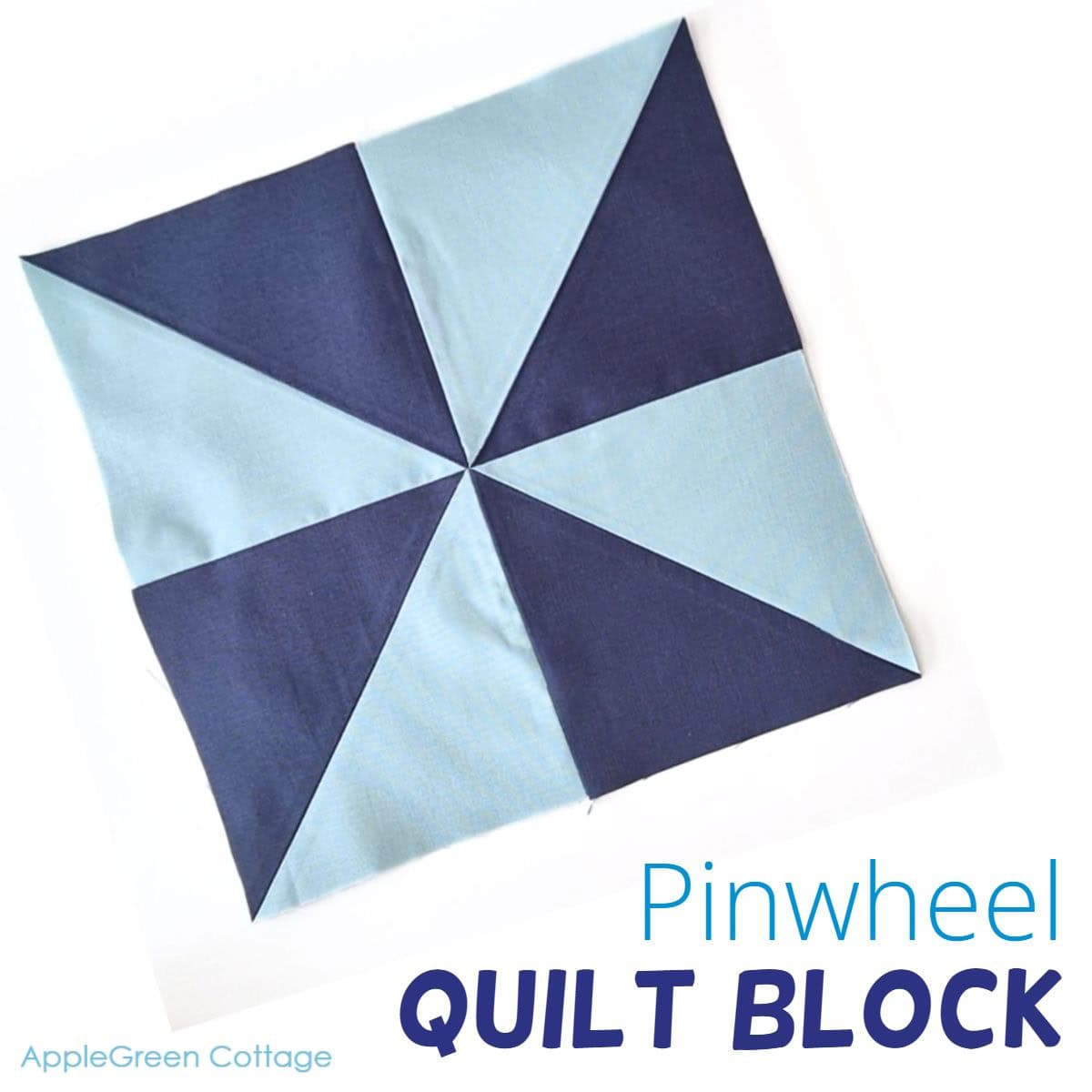
Table Of Contents
Why you'll like the Pinwheel Block
This block is never boring - and this is what I love most about pinwheels!
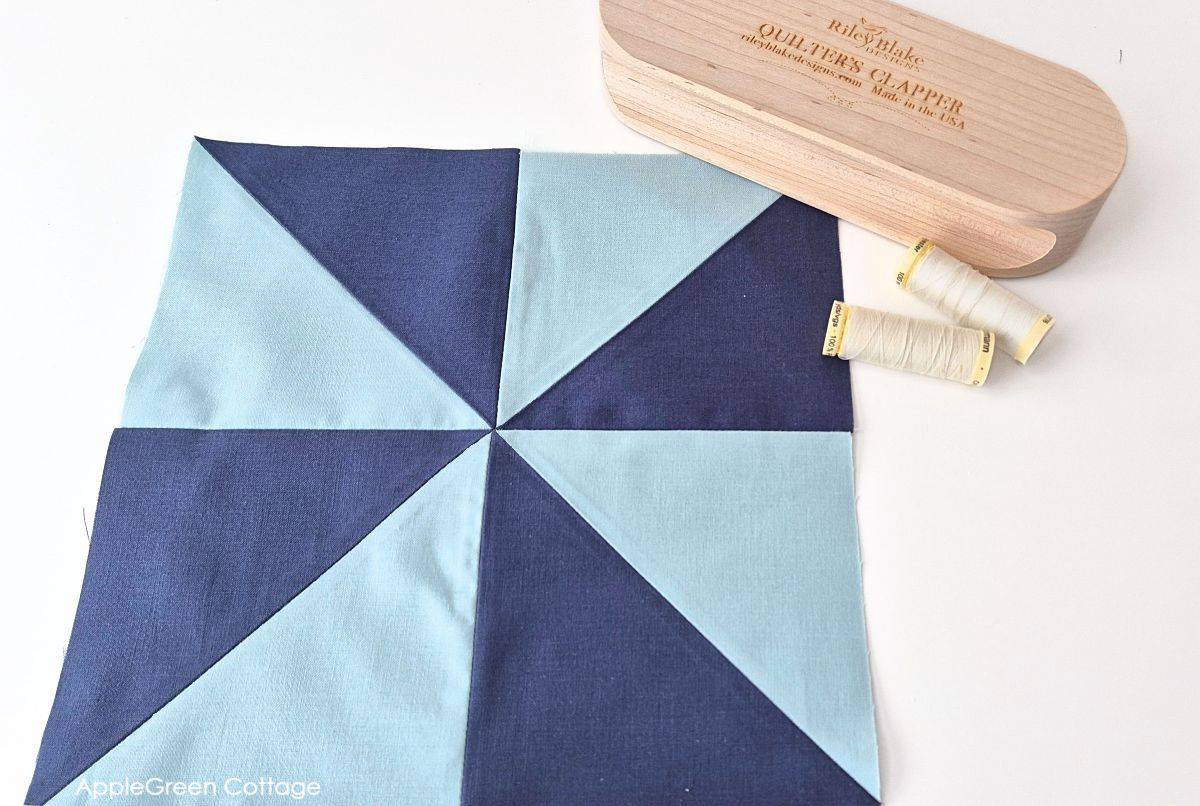
It's one of the most versatile quilt blocks! Made from half-square triangles (HSTs), it comes together quickly and looks beautiful in any fabric combination.
Plus, I'll show you how to get a flatter finish every time.
Video
Finished Sizes CHEAT SHEET!
The unfinished block (i.e. completed, but not yet sewn into a quilt) in this tutorial measures 8 ½" square. Once sewn into a quilt, it will measure 8" square.
Want a different size? Get our Cheat Sheet →here to create all sorts of different sizes of Pinwheel blocks, from blocks finishing as tiny as 1", up to 12" finished pinwheel blocks.
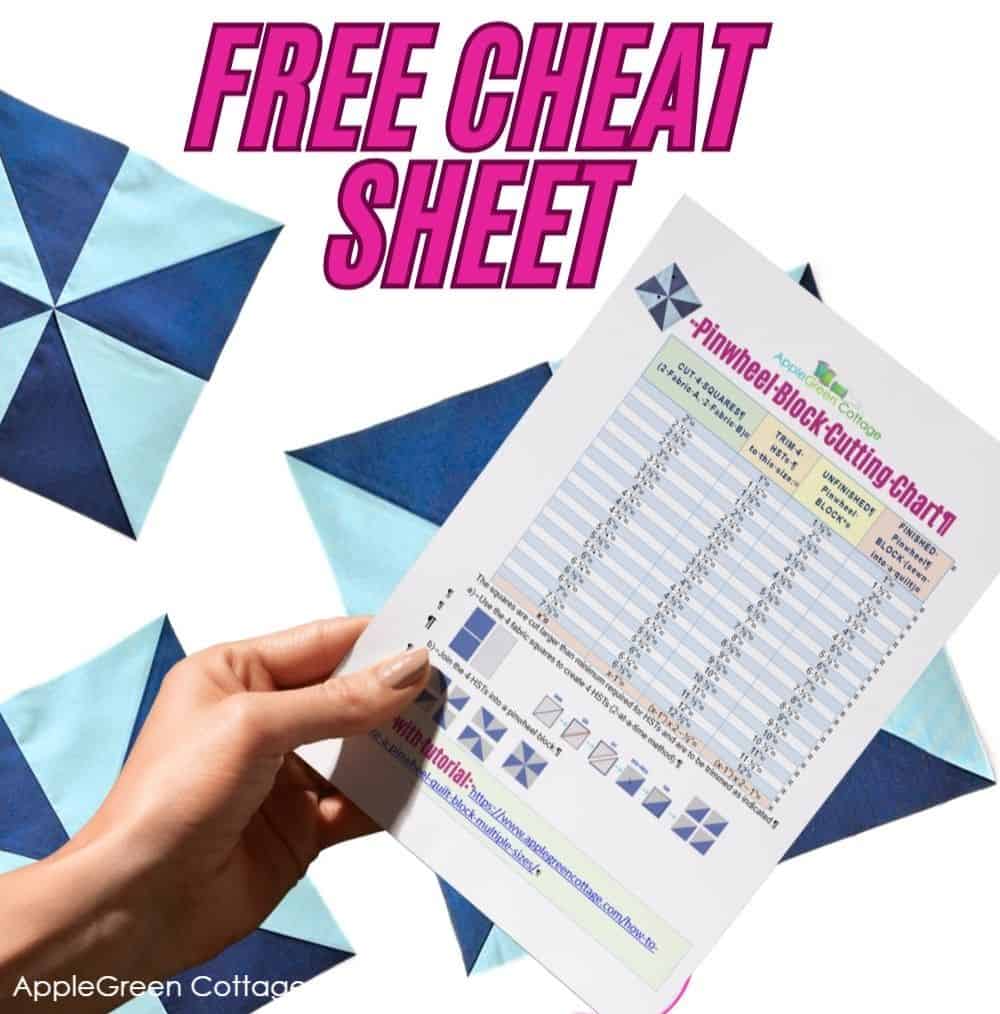
Supplies
Shop my personal favorite sewing supplies on Amazon HERE.
- quilting fabric: 2 squares in Fabric A, 2 squares in Fabric B
- a rotary cutter and a cutting mat
- the usual: sewing machine, thread, iron, pressing board (←I DIYed mine!)
- a quilting ruler - see my favorite rulers here
TIP: a ¼" sewing machine foot is inexpensive and makes piecing so much more accurate (like this one on Amazon)
How To Make A Pinwheel Block TUTORIAL
The pinwheel quilt block is a classic, made from HSTs. Since HSTs can be tricky, we’ll cut them larger and trim them down for better accuracy. This "cut bigger, trim later" method makes sewing easier and helps me (and you!) get perfect points with less effort.
Step 1 - Get the Pinwheel Cutting Chart to choose your size
Join our mailing list and get the Pinwheel Cutting Chart a.k.a. HST CheatSheet emailed to you:
Use the chart to pick the size of fabric pieces you need for your project.
Step 2 - Cut Your Fabric Squares
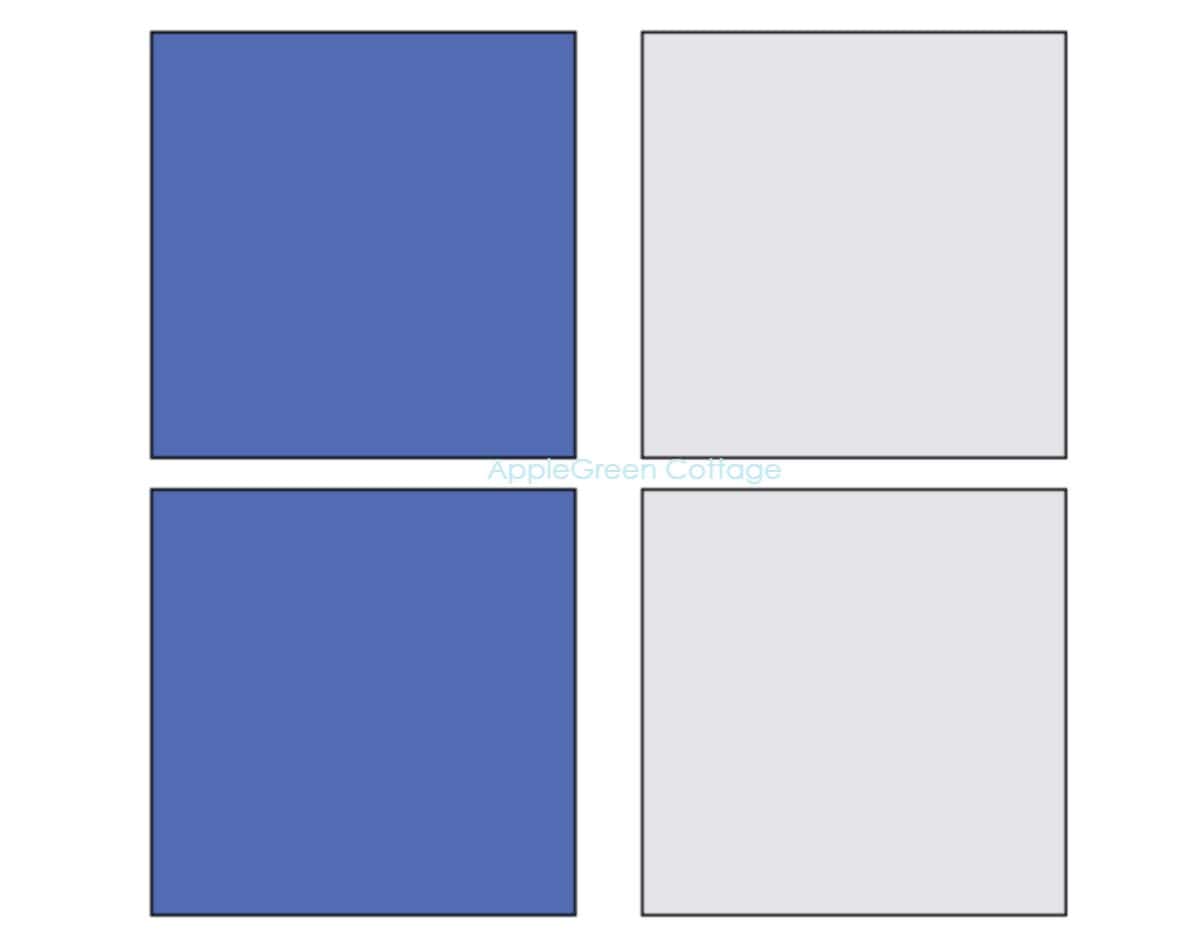
Cut two squares of Fabric A and 2 squares of Fabric B - all the same size, depending on what size of quilt blocks you chose from the cutting chart. I chose 8 ½" squares.
NOTE: In this tutorial, I pressed all my seams open to minimize bulk. I want my pinwheel block to lay as flat as possible. Check out the tips below this tutorial for more info on when to press open and when to press to the side.
Step 3 - Create 4 HSTs
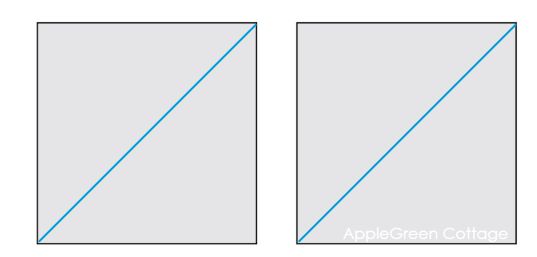
1- Start by drawing 2 lines: on the back of each of the Lighter 2 fabric pieces, draw a diagonal line from corner to corner. These will be your guides.
Place the first dark-light pair of the squares right sides together.
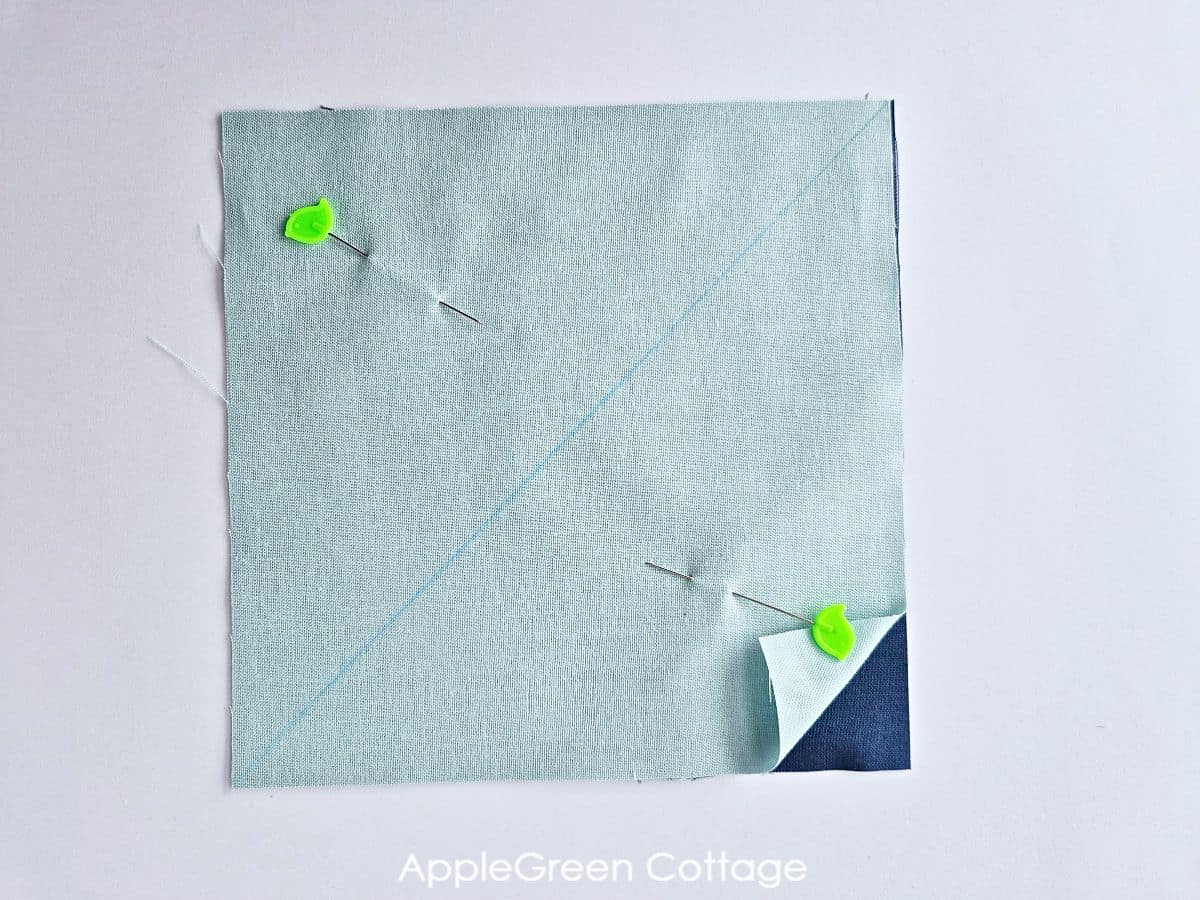
2 - Sew a ¼" seam on both sides of the line:
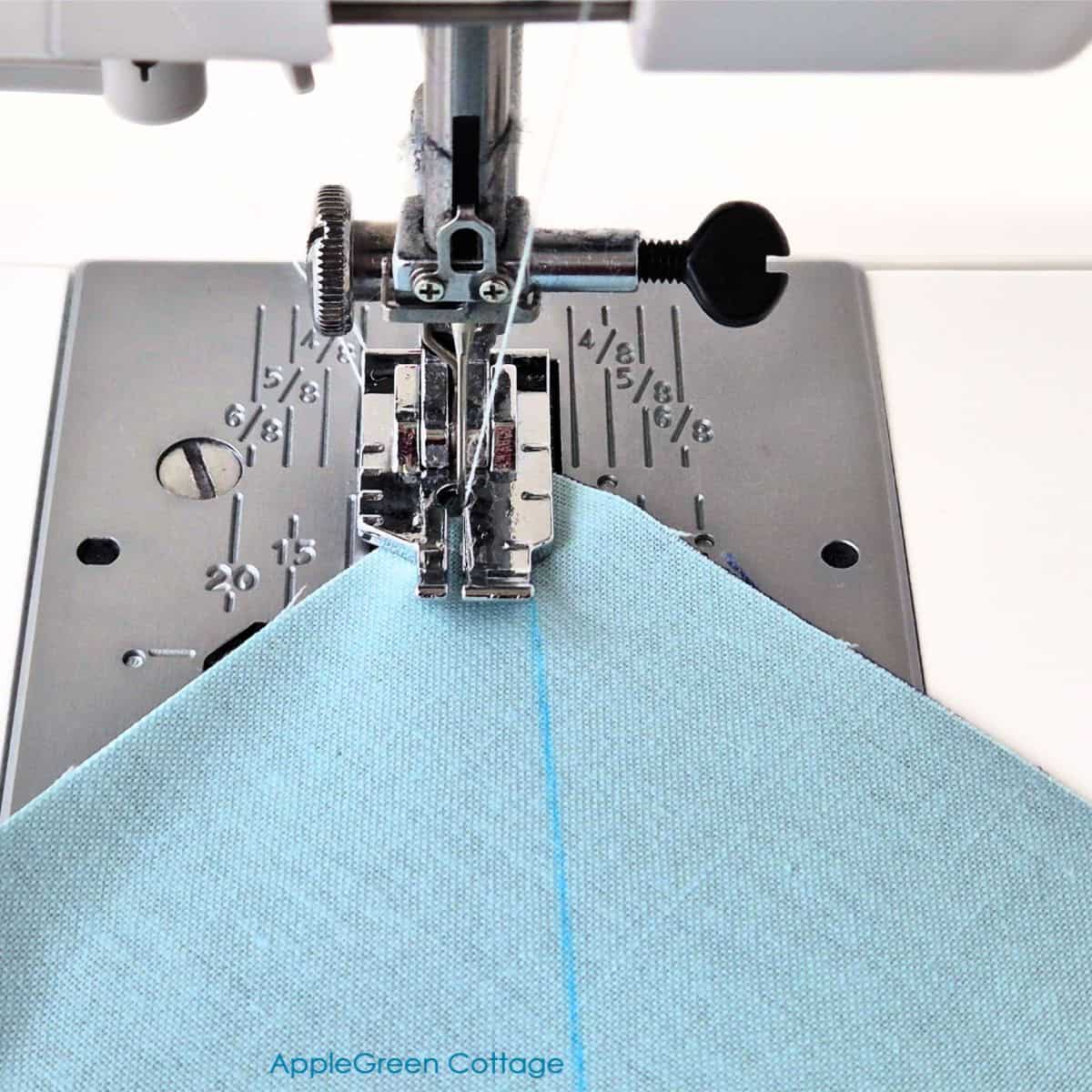
Using a ¼" seam allowance, sew two parallel lines per piece – on each side of the drawn diagonal line. Keep your stitching consistent for accuracy. You can either mark the ¼" seam lines, or use a quarter inch foot.
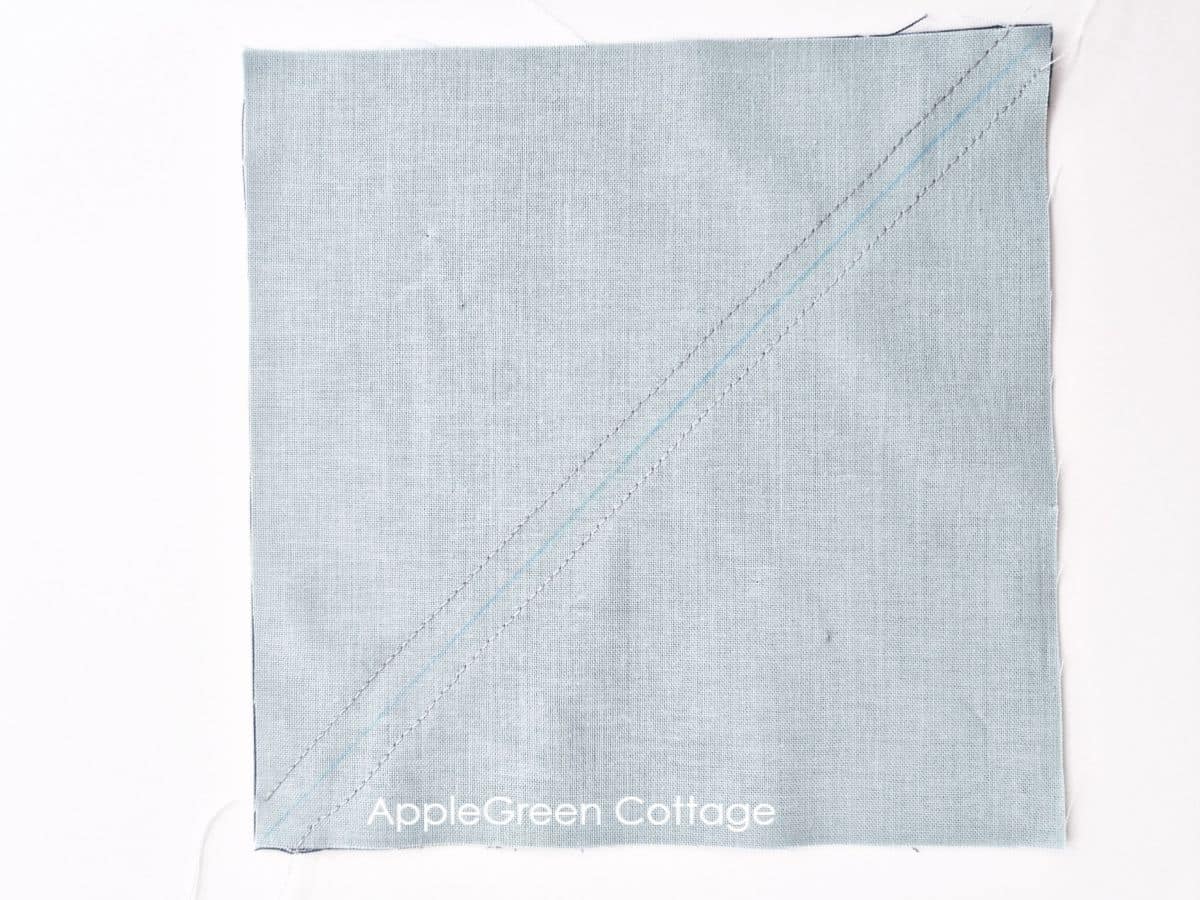
3 - Cut along the diagonals:
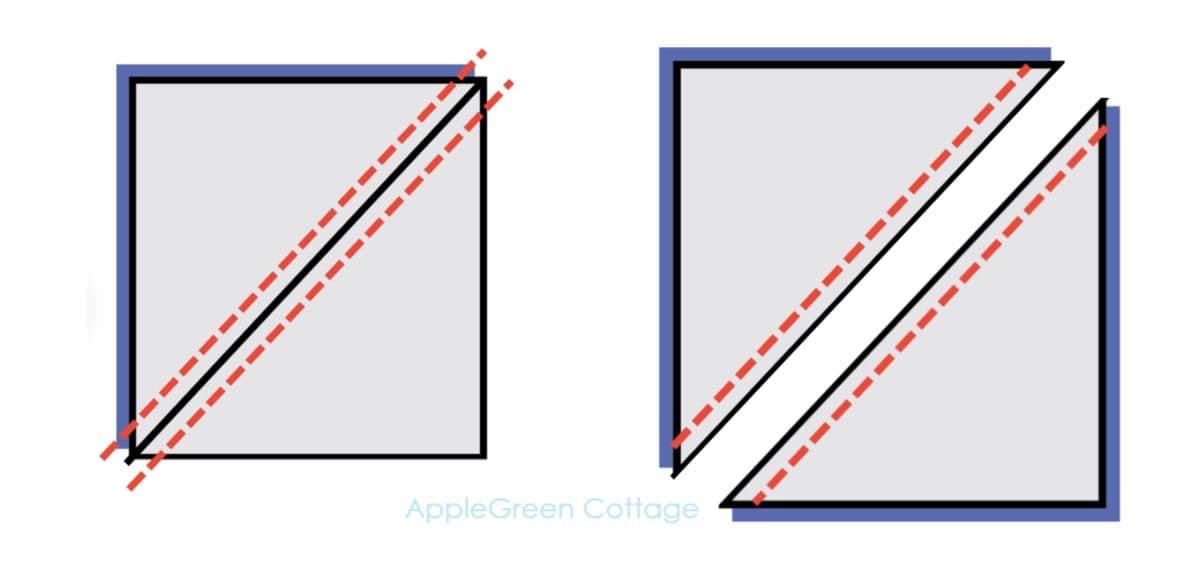
With your rotary cutter and ruler, carefully cut on the diagonal line. This will give you two half-square triangle units.
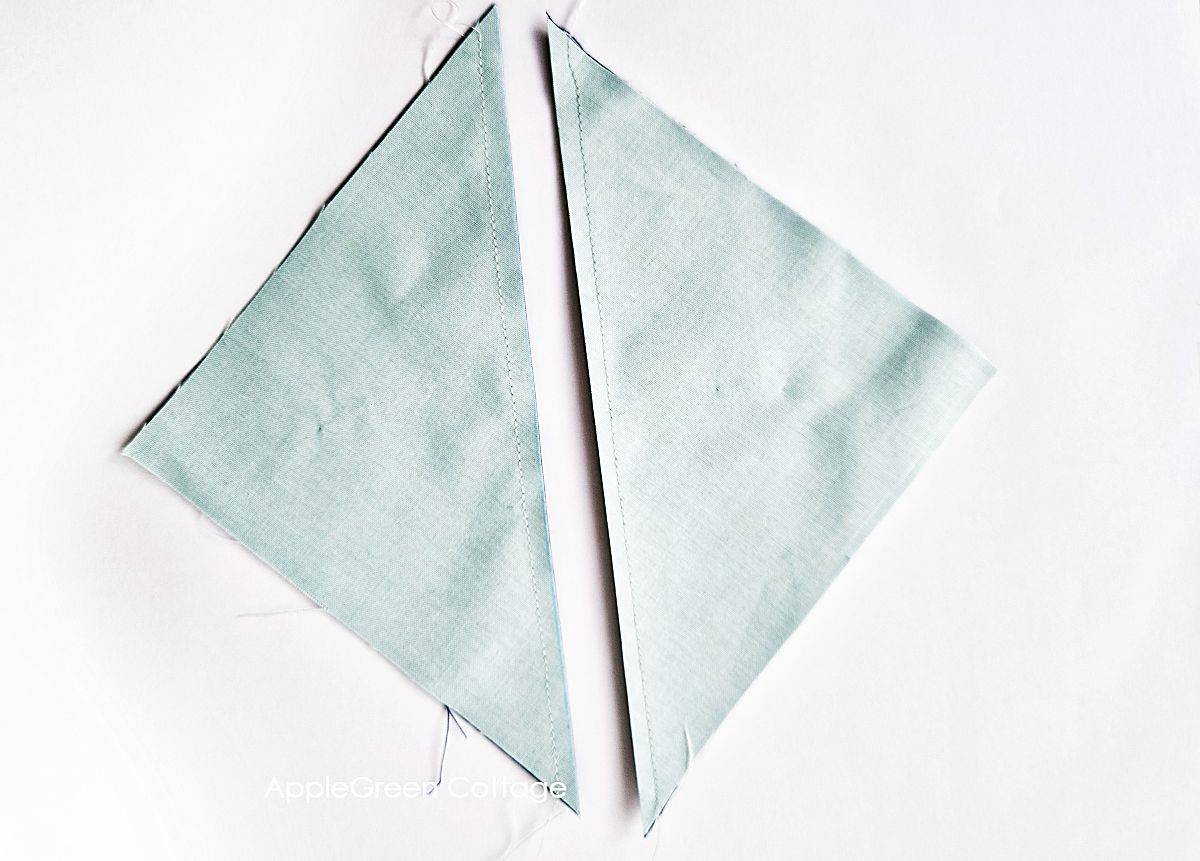
Repeat with the second pair of fabric squares to create 2 more HSTs.
Step 3 - Press Seams Open and Trim To Size
I will press seams open today because the pinwheel finishes flatter.
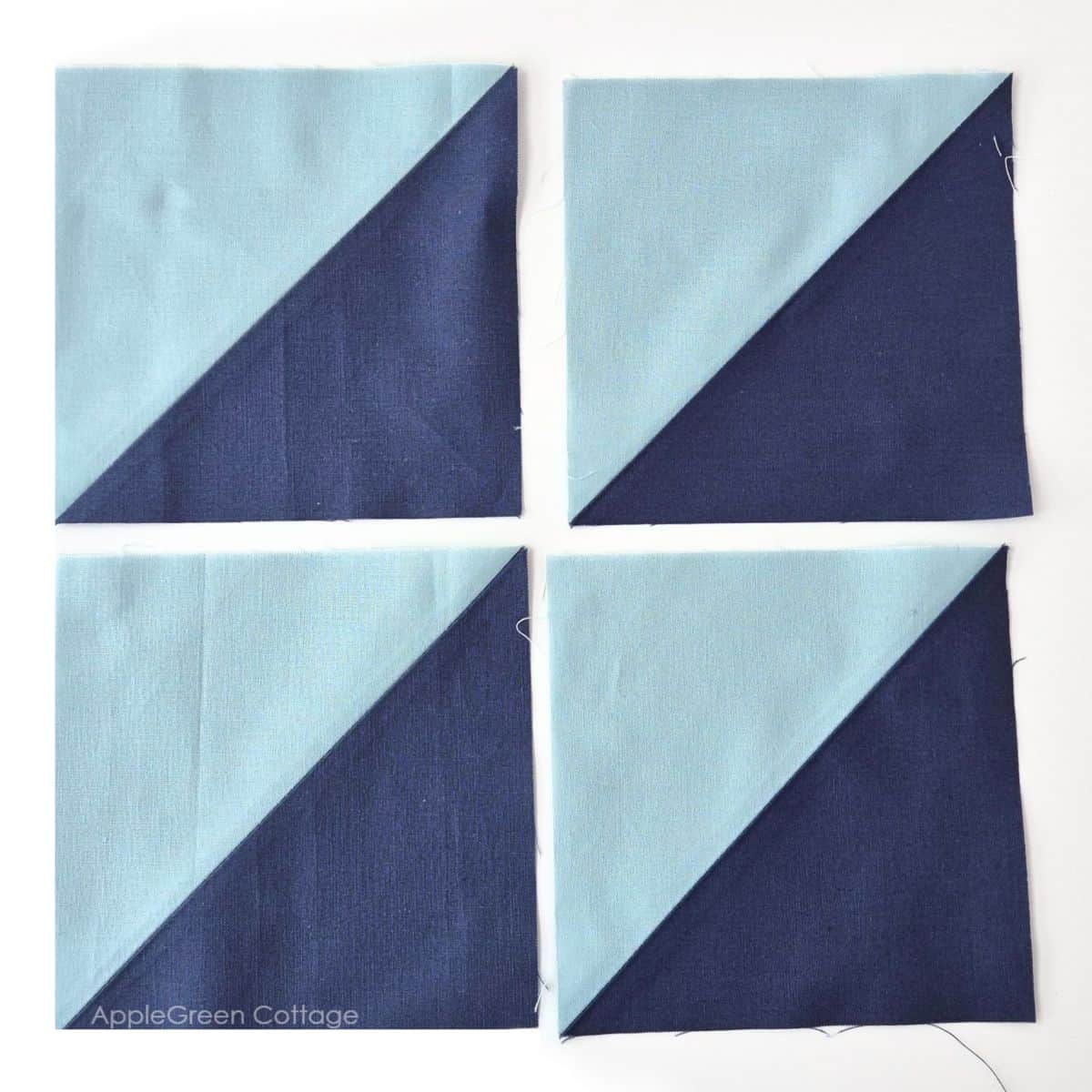
Press all seams open for a flatter, easier-to-sew block. (I know, I know - if you love nesting seams, press to the side. But try open seams just once - you might be surprised, like I was! 😉)
Use a square ruler with a diagonal line to trim the HSTs to size. (I included the trimming size into the downloadable chart.)
Step 4 - Lay Out The Pinwheel
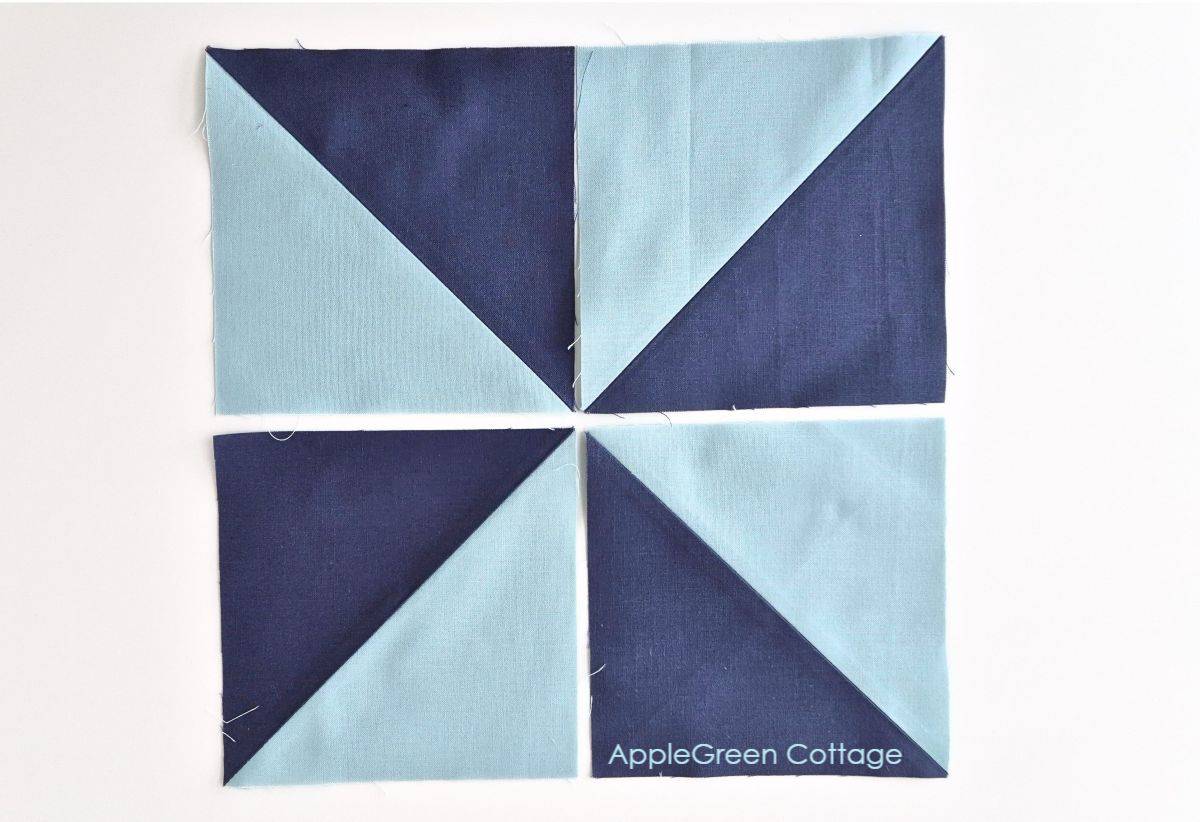
The fun can start now: Arrange your HSTs into a pinwheel shape. It can spin clockwise or counter-clockwise - both work, just be consistent!
Step 5 - Sew Pairs Together
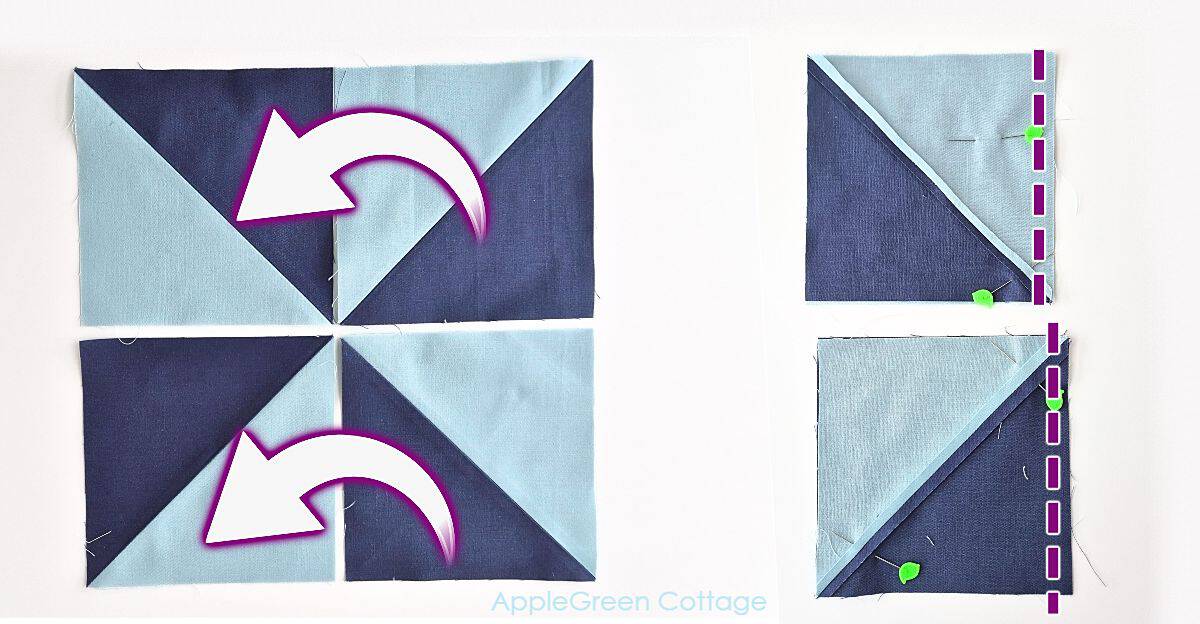
- Sew the top two HSTs together and the bottom two HSTs together.
- Press seams open again. You've got two rows now.
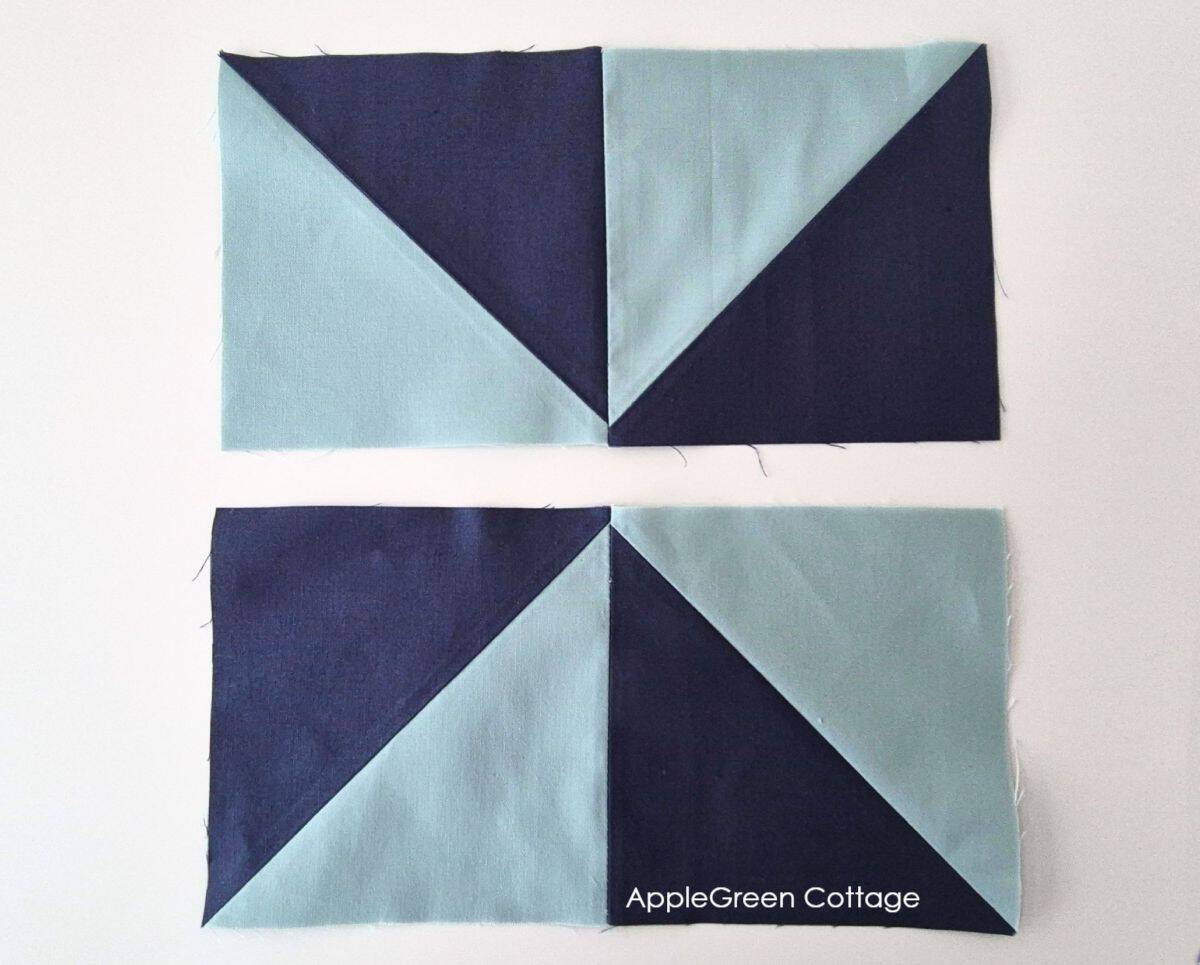
Step 4 - Before The Last Seam
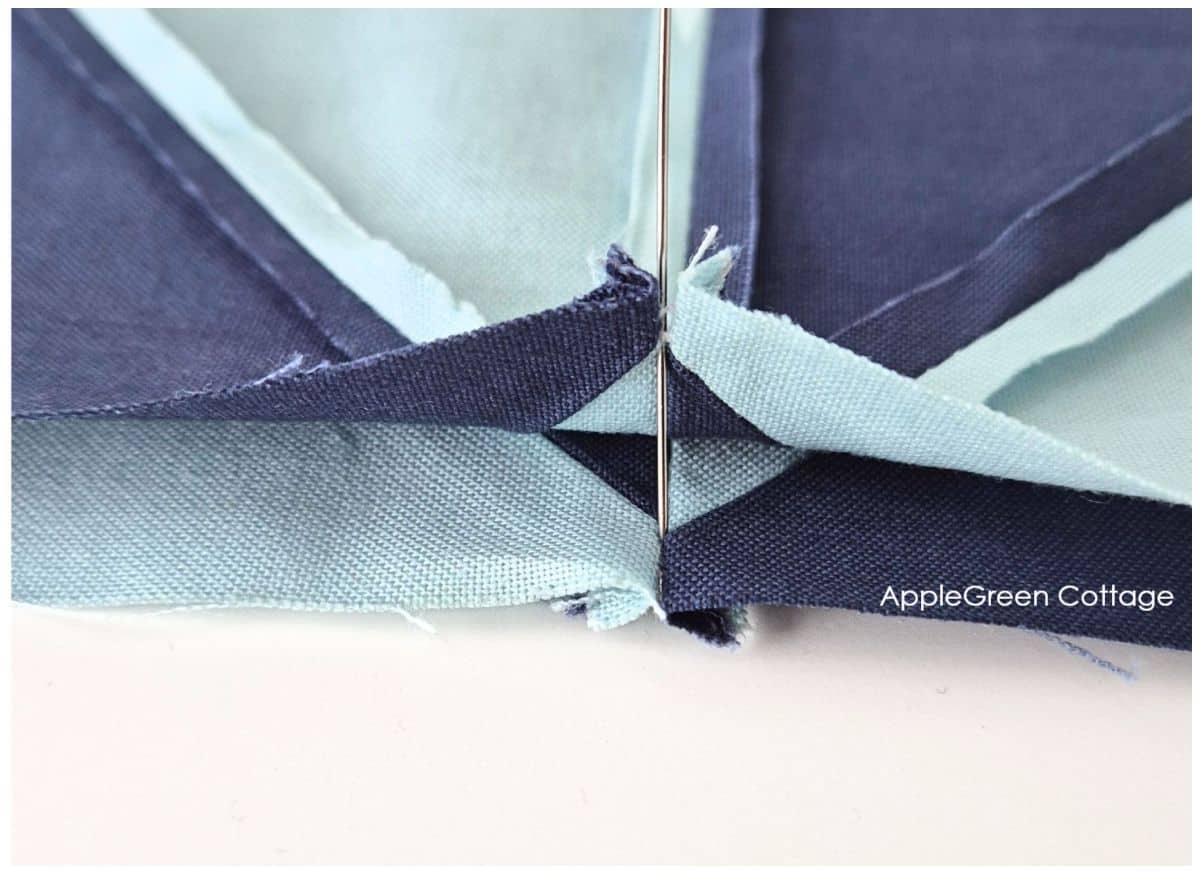
Match the center seam and stitch the two rows together. Here's a good way to match the center: I pushed a pin through both points where the final seam needs to go for a perfect pinwheel. (and this is my only secret to getting that point sharp and perfect!)
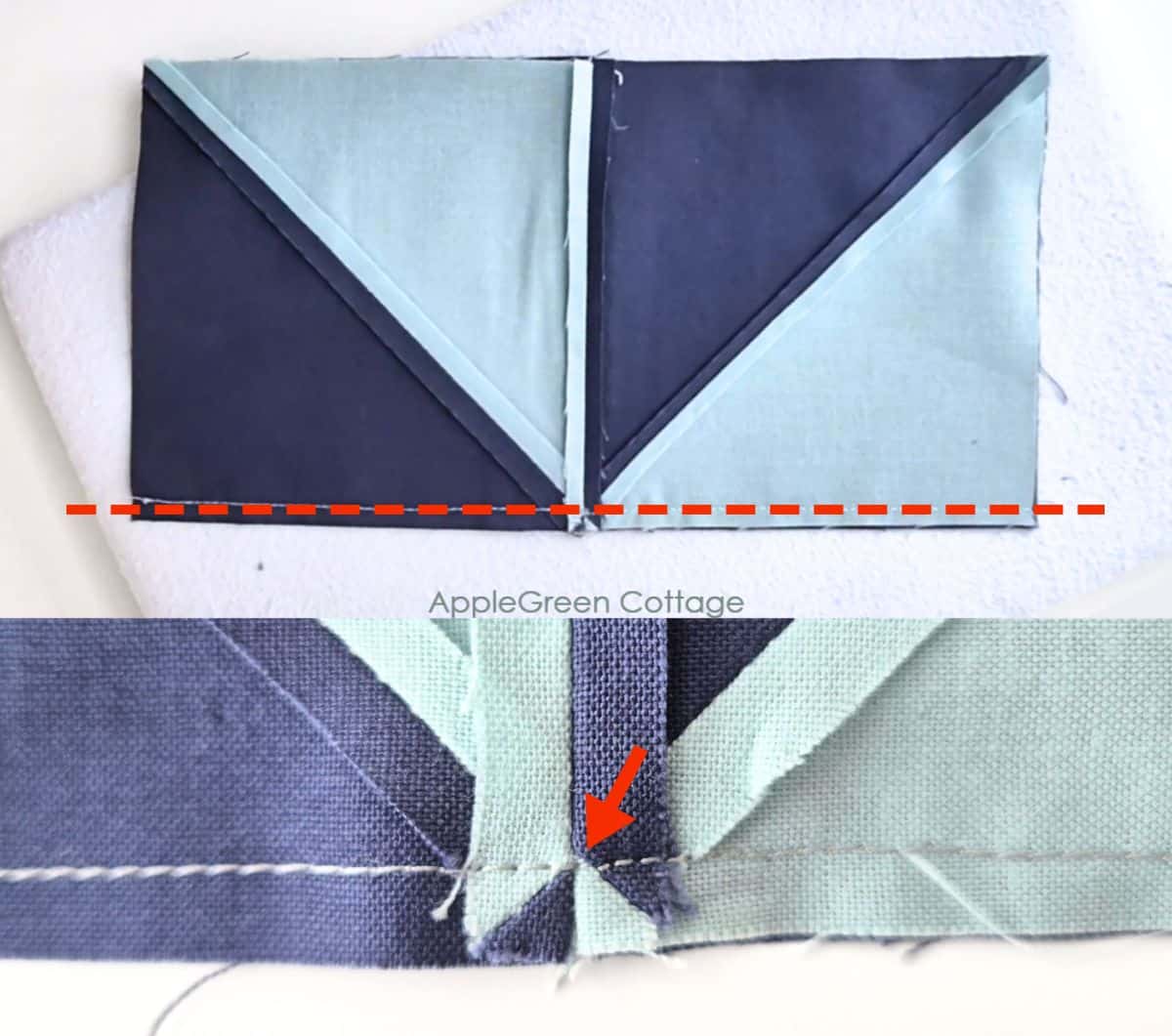
Step 5 - Press the Final Seam
Unfold and press the seam open. (I pop my Quilter's Clapper on the center while it’s still hot, it works great!)
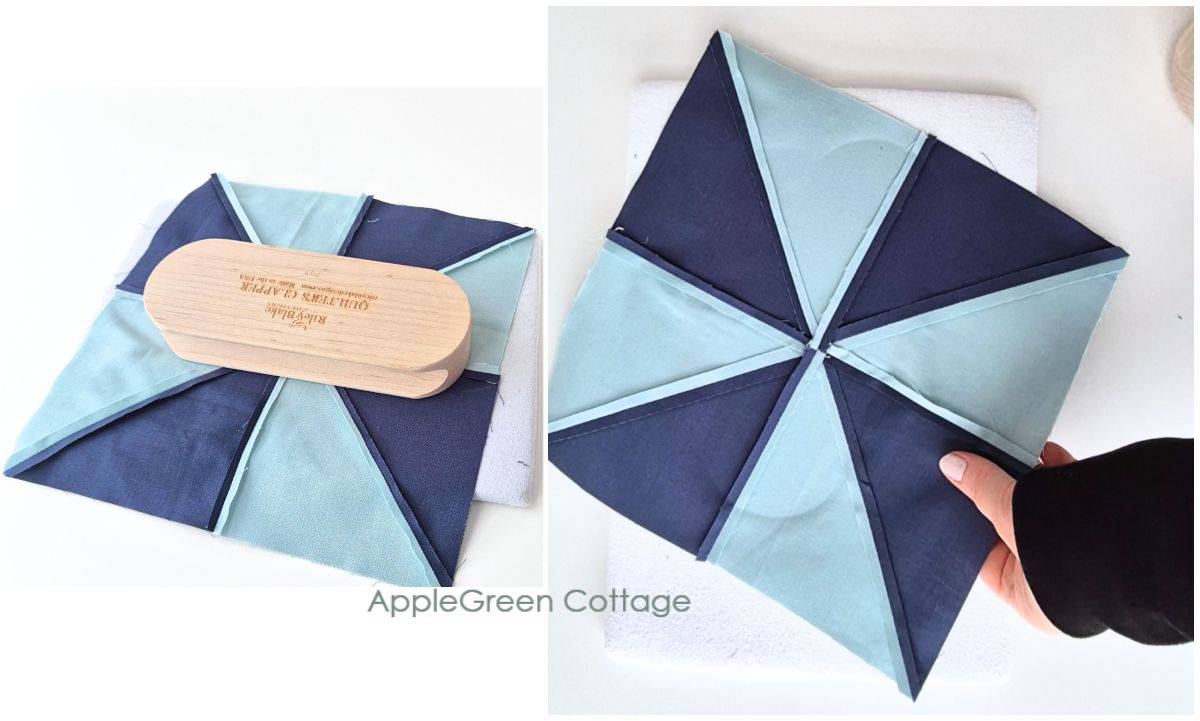
Using a ruler with a 45° diagonal line, check the size and trim if needed. Most times, you won't need to trim.
Related Projects
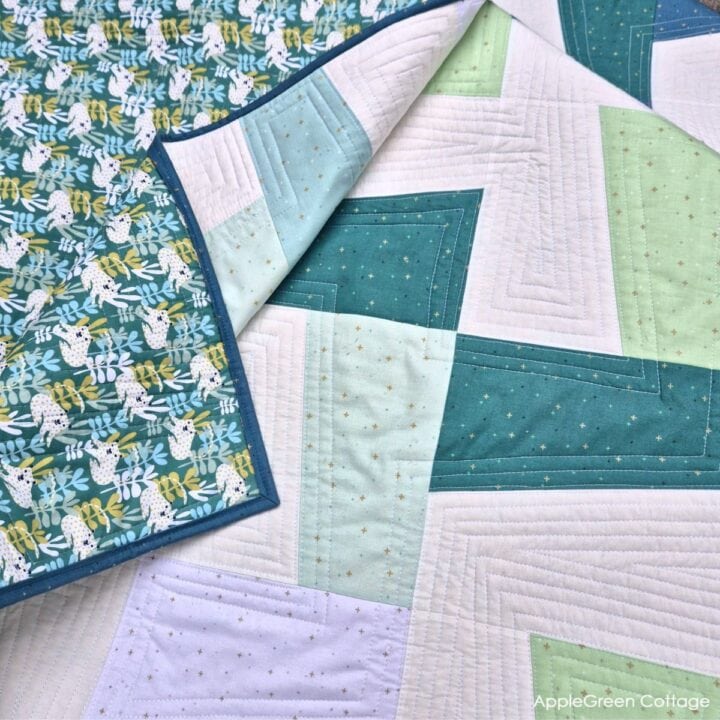
Randomize Quilt Pattern
Love modern quilts but want something simple - and NO tricky points to match? →THIS.
Looking for other projects like this? Try these:
Useful Tips For Beginner Quilters
Quilting is easier with the right approach! These simple tips will help you build confidence and improve your skills:
How to Press Seams On a Quilt Block
To press to the dark side, or to press seams open? Both methods have their advantages! In short, pressing open is best for reducing bulk, while pressing to the darker side adds strength. The right choice depends on your quilt design and personal preference.

So when to press quilt block seams open vs. to the darker side? Here’s a clear comparison to make it easier for you:
Pressing Seams to the Side
- Adds strength and durability
- Helps 'nest' seams together for easier piecing
- Faster to press
- BUT Can create bulk at seam intersections
- May cause fabric distortion in dense seam areas
Pressing Seams Open
- Reduces bulk at intersections, creating a flatter quilt
- Ideal for complex designs with many seams
- BUT not so easy to match points for precision
- Can weaken the seam slightly since there’s no extra fabric reinforcement (do not stitch in the ditch over these open seams!)
What Ruler Is the best for trimming HSTs?
- Creative Grids Ruler – Non-slip grip and Turn-A-Round feature for precise ½" and 1" measurements, ideal for HSTs.
- Bloc-Loc HST Ruler – Locks into seams for perfect alignment and trimming without shifting.
- Quilter's Select Square Ruler – Non-slip surface and clear markings for precise trimming, especially for small HSTs.
- Deb Tucker’s Tucker Trimmer – Versatile ruler with diagonal guides, great for precision piecing and triangle-based units.
- Omnigrip Square Ruler – Classic choice with bold gridlines and compact sizes, reliable for accurate HST trimming.
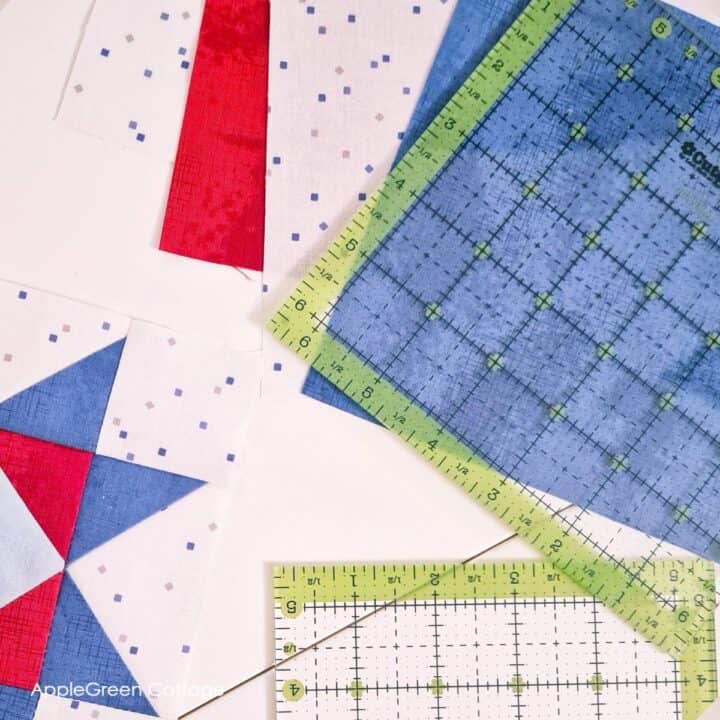
See my 4 Favorite Quilting Rulers!
What to Look For in a Ruler for Trimming HSTs?
When choosing a ruler, keep the following in mind:
- Diagonal Line: Ensure the ruler has a clearly marked 45° diagonal line to align with the seam of your HSTs.
- Size: Choose a size that suits your project. A 6½" square ruler is a versatile size for most HSTs.
- Grip: Non-slip rulers (like Creative Grids or my favorite - this Omnigrip) help prevent fabric shifting during trimming.
Bonus Tip: Rotating Cutting Mat Will Make Trimming Quilt Blocks Easier
Pair your favorite ruler with a rotating cutting mat to make trimming even easier. Instead of lifting and repositioning your fabric, you can simply spin the mat, maintaining accuracy and saving time.
Conclusion
I hope you liked the tutorial, and now have your perfect pinwheel block ready for your next quilt. I can’t wait to see what you create!
Don't forget to grab your free cutting chart for Pinwheels:
Sew This Handy Storage Tote!
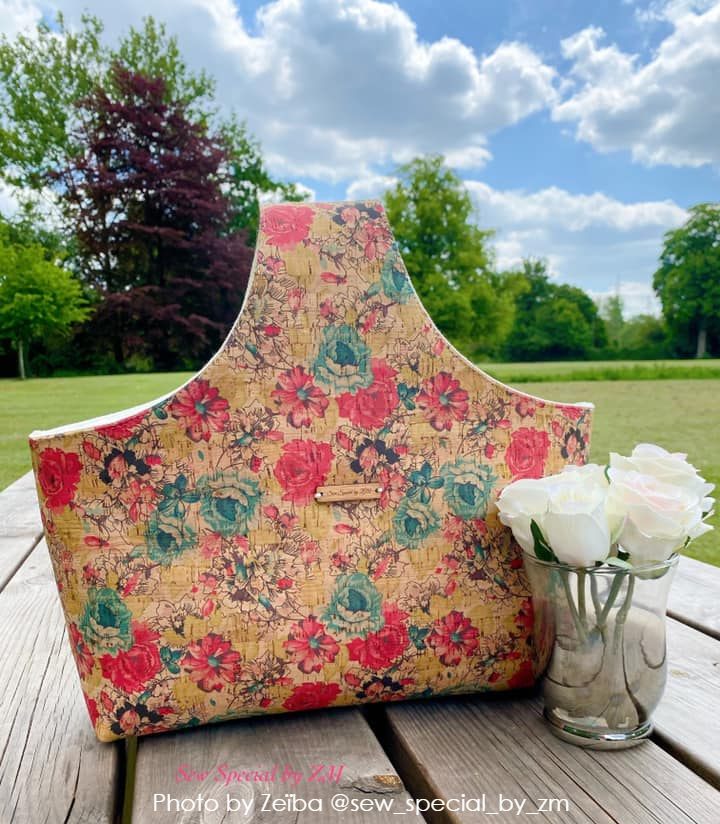
Check out this pretty ALLina project tote pattern in our shop - for all your storage needs!

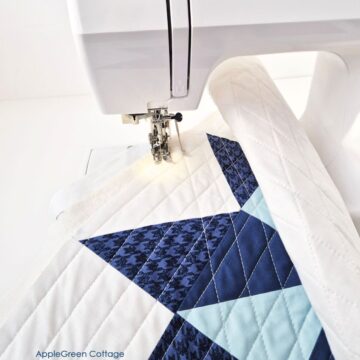
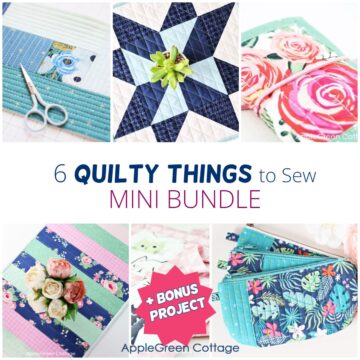
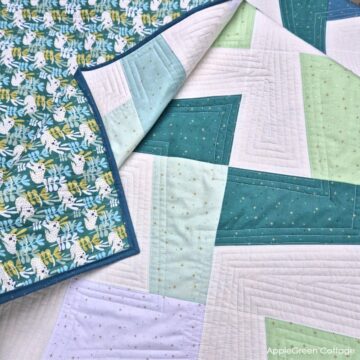
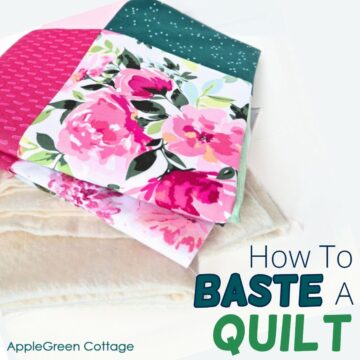
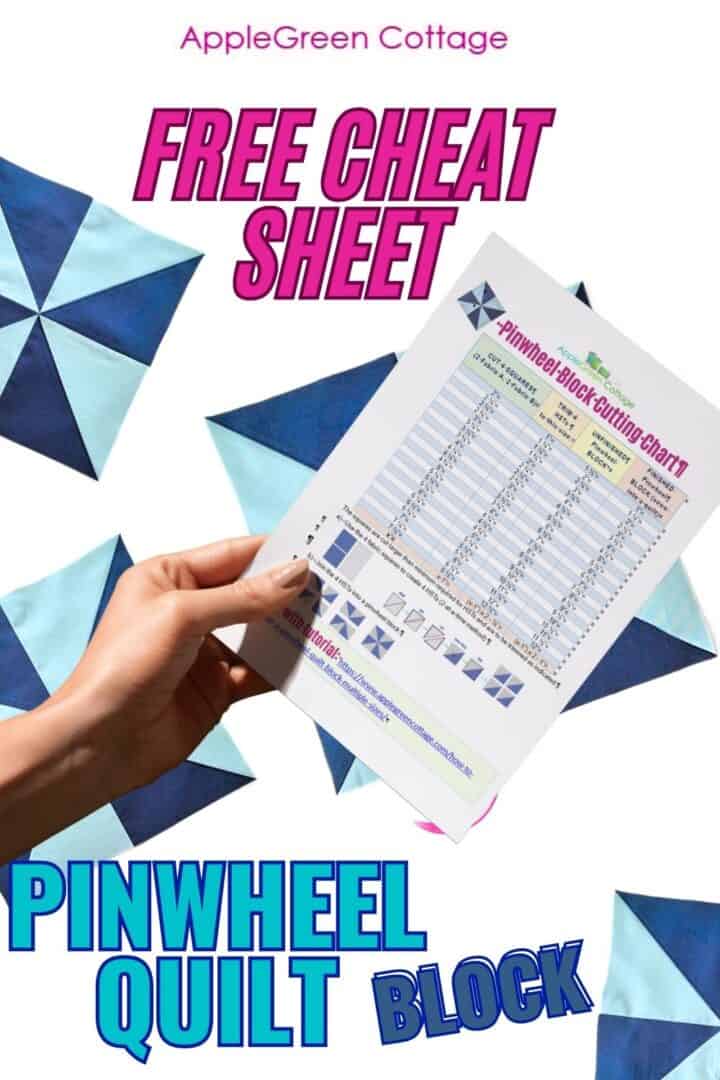

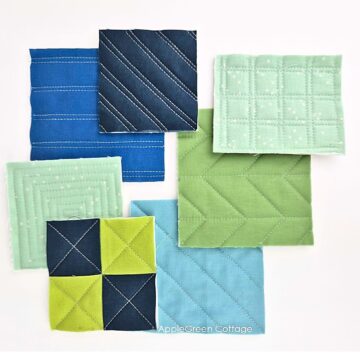
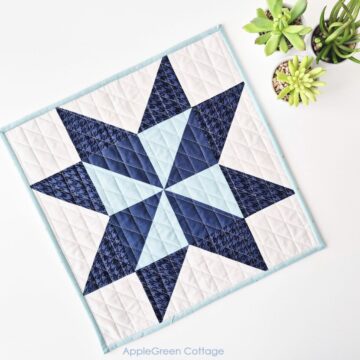
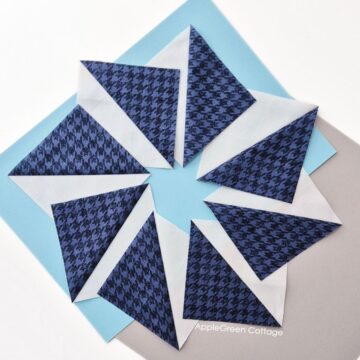
Leave a Reply